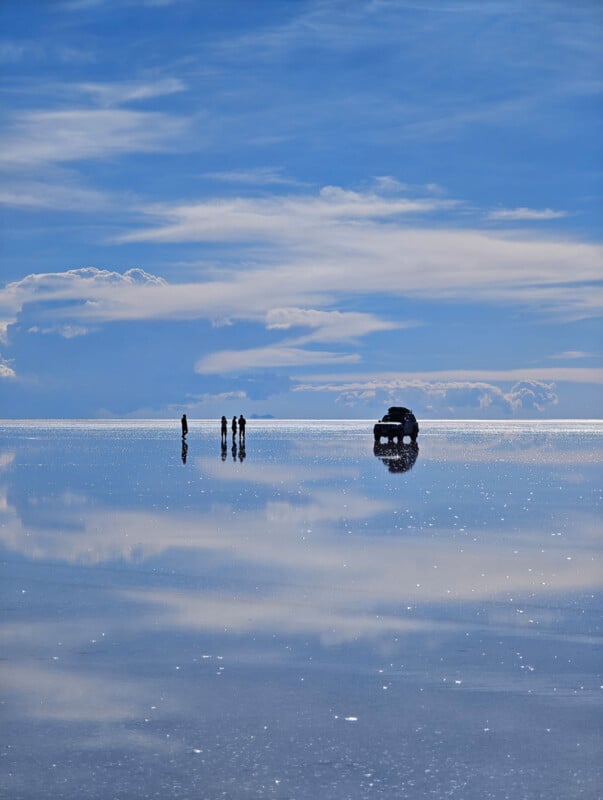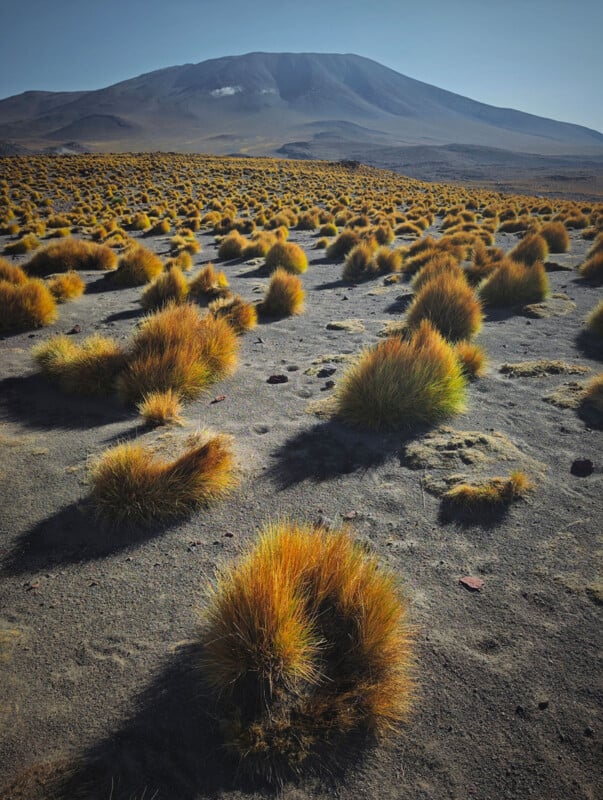An Astrophotographer’s 20-Day Adventure Under the Darkest Skies in the World
![]()
Award-winning astrophotographer Mihail Minkov recently returned home to Bulgaria following an incredible 20-day journey across South America, where Minkov visited some of the world’s most spectacular locations with the darkest skies.
Minkov spent the better part of a year planning the trip halfway across the globe.
“Ever since I began landscape astrophotography, it has been my dream to visit the Atacama Desert in Chile, one of the darkest places on Earth, free from light pollution,” Minkov tells PetaPixel. “It’s no coincidence that some of the world’s largest and most renowned astronomical observatories are located there.”
![]()
While Minkov’s trip lived up to his expectations, he wants to note that while he was in Chile, he learned about a proposed large-scale wind farm project that could increase light pollution in the area by about 35%, “which would be disastrous for the observatories and the work of many Chilean scientists.”
Minkov, who says he can safely count himself as a professional photographer now that he’s been actively doing it for six years and hosts many workshops, also added Bolivia and Easter Island to his adventure.
“I expanded my trip to include Bolivia, drawn by the stunning Uyuni Salt Flats, and later added Easter Island, an unexpected yet thrilling addition I hadn’t even dared to dream of,” the photographer says.

While he could do much of the planning, he needed local help to turn his astrophotography dreams into reality.
“The first step was finding a local partner in Chile. That’s when I met Plamen, who had visited Bolivia a year before me. His travel stories were inspiring, and he proved to be a wonderful connection. Through him, I was introduced to Elena, who has lived in Chile for over 20 years and specializes in organizing tours. The real surprise came when I explained that we weren’t typical tourists, we were astrophotographers, primarily interested in shooting at night. She took care of all the logistics, from accommodation to travel routes, while I planned the specific locations we wanted to photograph,” Minkov says.
![]()
He shared the trip with eight other passionate photographers, who helped make the experience even more special.
“Some of us had discussed these locations long before the journey even began, dreaming of the day we would explore them together. Leading a group tour comes with great responsibility, you must be prepared to handle unexpected challenges,” Minkov says.
While everyone brought their unique skills to the trip and helped make it memorable, Minkov says he wants to give a special shout-out to Rossi, a fellow photographer in the group who speaks Spanish.
![]()
“Thanks to her, we were able to communicate with the Bolivian customs officers, who held us at passport control for over three hours after a grueling 12-hour flight because we hadn’t arranged our visas in advance and had to purchase them on the spot.”
![]()
There are many things that pop up during an international photo trip.
“It’s always a pleasure to share these adventures with amazing people who share the same passion. Our group was fantastic, everyone was inspired and thrilled by the breathtaking locations we visited,” Minkov says.
One challenge of any photo tour, especially one focused on nighttime photography, is that it’s difficult to keep out of each other’s frames.
While each photographer had their own specific goals for the expedition, Minkov says he was most excited about the salt flats in Bolivia.
![]()
“At an altitude of 3,700 meters, the night sky is simply breathtaking. Add to that the mirror-like reflection created by rainwater that doesn’t seep into the salt, and the scene becomes otherworldly,” Minkov says. “One fascinating aspect is how the water behaves it doesn’t simply disappear; it only evaporates. Another intriguing phenomenon is that the water ‘moves’ rather than staying in one place. During the day, the wind shifts it across the surface, and at night, we had to search for where it had relocated in order to capture the perfect shot. Every evening turned into a quest to find the water’s new position.”
Salar de Uyuni is the world’s largest salt flat, spanning over 10,000 square kilometers (4,086 square miles). Despite its massive size, the elevation across the entire area varies by only about 50 centimeters. It’s so flat that satellites use the area for calibration, Minkov notes.
![]()
“I will never forget the moment I stepped out of the jeep at night and looked up at the sky. The countless stars shimmering in the water’s reflection are etched into my memory. For the first half-hour, I was overwhelmed — caught between the urge to capture it through my lens and the desire to simply soak in the beauty above me,” Minkov recalls.
He says that his native Bulgaria, while beautiful in its own right, offers little by way of very dark skies, and nothing that compares to the sky over Salar de Uyuni.
“It was an unforgettable experience,” Minkov says. “The Atacama Desert and Easter Island were also stunning, but Salar de Uyuni remains my favorite.”
Minkov is already planning future visits, as he calls his recent trip and photo tour a “familiarization tour.”
![]()
“My plan is to repeat it next year,” Minkov says.
However, the trip was not without its challenges. 20 days is a “long time,” Minkov admits, “especially for a father of two with a working wife. I must admit, the last three days were particularly challenging on a personal level. I missed my family a lot.”
It was also challenging from a photographic perspective. While photographers can learn a lot about a location through remote scouting online and scouring many resources, nothing beats in-the-field experience. Scouting is best done during the day, but night photography, of course, must be done at night, so Minkov and his tour group did not sleep much.
![]()
“I and most of the group only averaged about three hours of sleep per night,” the photographer says. That lack of sleep is tough after a day or two, let alone nearly three weeks. “It was exhausting.”
The high altitude also posed a challenge for Minkov and others not used to it.
“I live in Sofia, Bulgaria, which sits at about 700 meters above sea level. We spent four days at 3,700 meters, then ascended to nearly 5,000 meters, followed by a descent to 2,600 meters, before finally reaching Easter Island,” Minkov says. They also experienced massive temperature shifts, ranging from a very humid 30 degrees Celsius (86 degrees Fahrenheit) down to -10 degrees Celsius (14 degrees Fahrenheit).

“All of this had a significant impact on the body.”
“What kept us going were the breathtaking landscapes, the incredible shots we captured, and of course, the amazingly delicious food we had along the way,” says Minkov.
Minkov had a rough idea of areas he wanted to shoot before arriving in South America. Still, specific compositions were born organically once he and his tour group arrived on site. Minkov adds that some members of the group are excellent scouters on top of being talented photographers, so they helped each other find the best shots.
![]()
![]()
“In the end, after some trial and error, experience paid off, and we captured some truly unique shots. We were incredibly lucky with the weather, managing to shoot at all our planned locations: Bolivia, Chile, and Easter Island, under clear night skies,” Minkov says. “And trust me, in these places, the night sky is beyond words. It’s something you must witness in person to truly appreciate.”
After six years of consistent, active night sky photography, Minkov admits he thought he had seen it all to some extent. He even started feeling burnt out and like he had lost some of his creative spark.
![]()
![]()
“I thought there was nothing that would particularly impress me,” he admits. “I needed some kind of recharge.”
“This trip inspired me a lot, I was able to see and experience things that I had never even dreamed of. I saw how important the dark sky really is, it makes a big difference,” Minkov says.
It’s always crucial for photographers to be able to step back when in the field, too, and embrace the moment.
![]()
![]()
“While I was on the field at Easter Island and taking photos, for a moment I said to myself, ‘Wait a minute, stop, feel where you are, in the middle of the Pacific Ocean, over 15,000 kilometers from home, in absolute darkness, within arm’s reach of these ancient and mystical statues, you are taking photos here, you have made a dream come true.’ It was an extraordinary moment, especially when the clouds eventually cleared and the sky opened up so that we could see all the beauty in colors and shapes, it was a unique experience!”
Image credits: All photos by © Mihail Minkov. More information about Minkov’s workshops is available on his website.